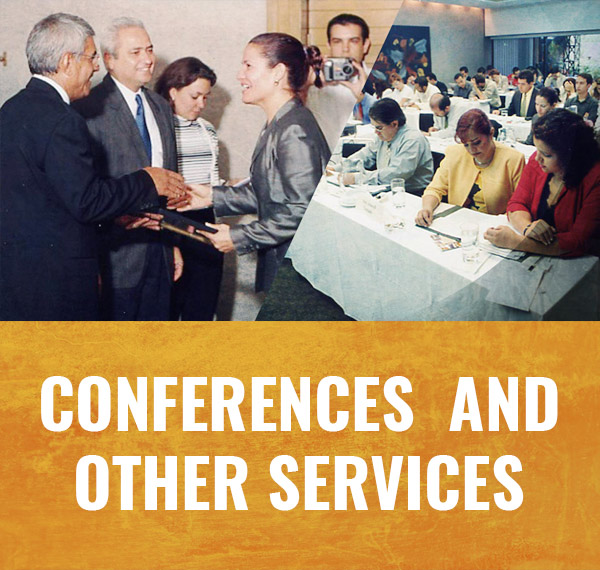
“Myths and Facts about Global Trade”, the book, will show you how to develop and put to use principles and practical advice offered by Alberto through his extensive experience. It will benefit the reader’s companies, and enhance their professional lives. It offers new ideas that can lead to broad opportunities in the global markets from the beginning in-depth answer to the question “Why export?” to detailed explanation on how to plan and perform any task necessary to achieve success in the import/export business.
How to export by minimizing risks and with little investment?
There are plentiful forms, articles, books and courses that teach us how to export, but there are a few which guide us in a practical and concise way on how to sell our goods and services in a demanding and competitive market, in other words do not teach the culture and details required. It is very common for those engaged in global trade, such as exports (whether in fact or in theory) to express themselves as experts, when the vast majority have not exported, that is, they speak as a part of the whole as if it were the whole! For you to export you must answer the following questions: Do you have a competitive product in the selected target market?
Before investing time and money to obtain information from experts, you can obtain it yourself as follows:
1) Add all costs from point of origin to destination, including freight, import duties, insurance, handlings, others. There are different sizes of containers: 20, 40 (sea) 28, 48 or 53’ (land). Divide the total cost of the shipment by the cubic feet of container used to obtain the cost per cubic feet. Then, calculate how many cubic feet are used per master box; multiply this number by the cost per cubic feet, to obtain total cost per master box. The total is divided by the number of pieces in each master box; in order to obtain the cost per piece (L/C), see below:
FORMULA
- Master Carton of 4 cubic feet (cuft)
- Container capacity: 2,500 cubic feet.
- Costs including all expenses per container: US $2,500 (Origin – Destination)
- Cost per cuft. = $2,500 / 2,500 = $1.00 USD § Master Carton: 4 CuFt
- Units packed in master carton: 4
- Cost per master carton = 4 X 1 = $4.00 USD
- Cost per unit = 4 / 4 = 1 USD
- Your landed cost (L/C) is $ 1.00 per piece.

For general merchandise, retail chains multiply the Landed Cost 3 to 3.5 from FOB, therefore if you competitor has a retail price more than 4 times for similar product, you are competitive! The selling market means you establish sales conditions. If your competitors price is below 3.5 then you enter the buying market, you will have to compete with better conditions than your competition.
2) How to pack the product depending on the client? By piece, pair, set, others; then you must select quantities per master box and / or quantities per individual boxes (inners).
3) What would be our target market? I recommend initially the US market.
Note. With the Free Trade Agreement (NAFTA) most goods do not pay import taxes except for medicines and others used to ingest, anoint and so on. Others require special permits such as raw materials, live animals, etc. You can check this at http://www.siicex-caaarem.org.mx/ for México, must be something similar in your country.
4) Do you have enough production or limited capacity? The answer to this question will guide you to the appropriate channel, retailer, wholesaler, others. It is suggested at the beginning to export surpluses, volumes of local clients that are slow, difficult etc.
5) In the US there are different Marketing Channels:
- Retailing = To consumers
- Wholesalers = To Retailers & Mom`s & Pop`s
- Independent Stores (Mom's & Pop's) = To consumers
- Direct Sales (Direct Marketing / E-commerce) = To consumers
- Bargain Buyers/Sellers (Jobbers) = To Retailers, Wholesalers & Mom’s and Pop’s
Note. Each Channel has its advantages and disadvantages. There is always one for you.
6) Are there similar products like yours in the US market? If so, then you are in the Buyer's Market. You will have to investigate the cost of similar products.
7) Is your foreign competitor offering delivery at store locations (drop shipment)? If the answer is yes, then you need to keep inventories locally.
8) Will the product be offered from country of origin (FOB) or do you have the infrastructure to deliver to store locations or warehouse centers (DC) See above.
9) Will the sale be handled directly or through local US sales agents? This issue is important since you have to add agent commission at your (FOB) price.
Note. Before having the final price, remember to eliminate your local costs when deciding the final price of your export product.
By answering these 9 questions you will have most of what is need it to export to the United States and similar markets
"Global Trade is not a set of rules, but a number of details"
Alberto Romo Chávez Jr.
This email address is being protected from spambots. You need JavaScript enabled to view it.






